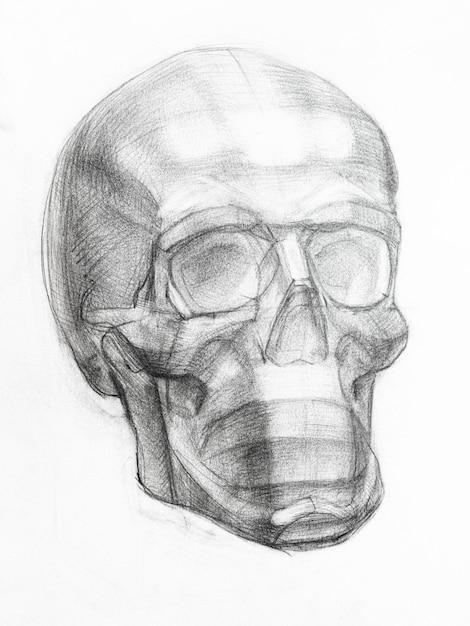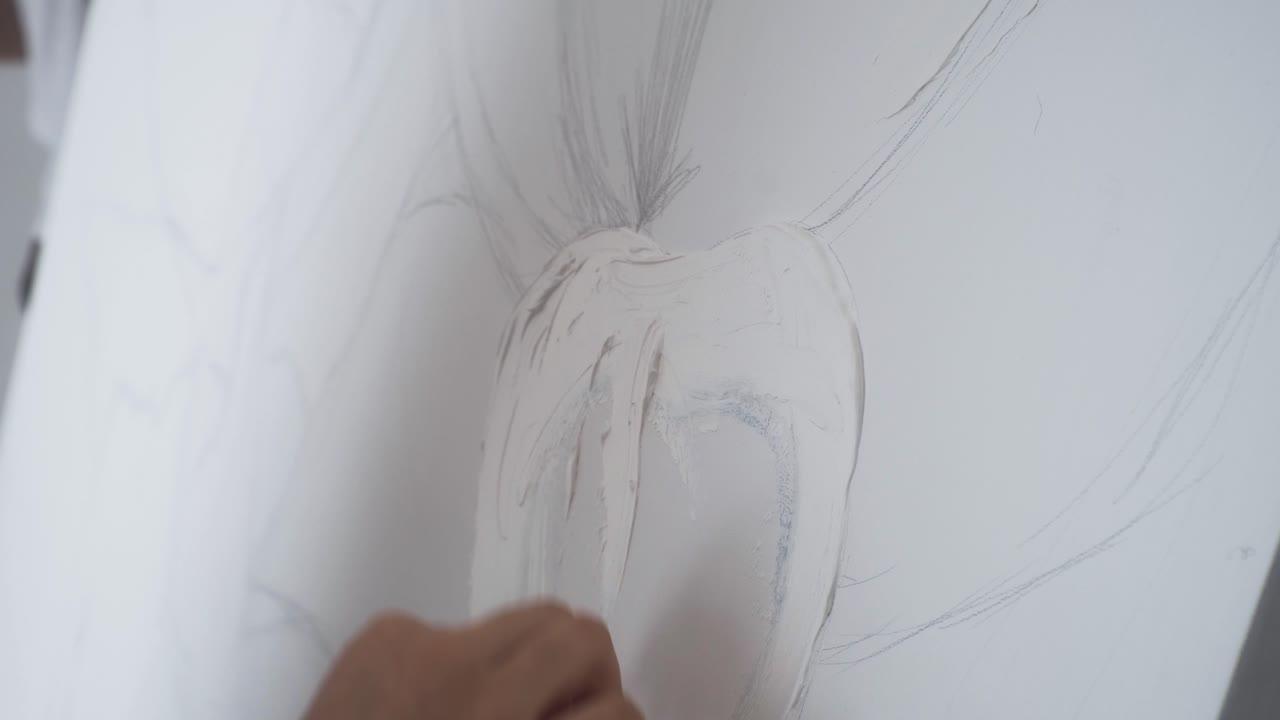Welcome to our blog, where we delve into the fascinating world of art and answer your burning questions. Today, we’re exploring the intriguing topic of drawing with pencil over gesso. Whether you’re a beginner artist or an experienced creative, you might be wondering if it’s possible to draw directly on gesso and how this might affect your artwork. We’ll uncover the answers to these queries and more as we dive into the wonderful realm of pencil and gesso interaction.
Throughout this article, you’ll discover whether pencil marks can be successfully applied over gesso, the compatibility of gesso with various drawing instruments, and the advantages of using gesso as a base for your artwork. We’ll also address some common concerns that artists may have regarding using gesso and provide you with helpful tips for achieving stunning results. So, let’s settle in and explore the world of drawing with pencil over gesso!
Can You Draw Pencil Over Gesso
Have you ever wondered if it’s possible to draw with a pencil directly on gesso? Well, wonder no more! In this article, we’ll explore the fascinating world of drawing on gesso with a pencil. So grab your sketchbook and let’s dive in!
What is Gesso
Before we delve into whether you can draw with a pencil on gesso, let’s first understand what gesso is. Gesso is a type of primer used to prepare various surfaces for painting, including canvas, wood, and even paper. It provides a smooth and consistent base, allowing the paint to adhere better and creating a more professional-looking result.
Gesso and Pencil: A Match Made in Artistic Heaven
Now that we know what gesso is, the question arises: can you draw with a pencil on gesso? The short answer is yes! While gesso is primarily used as a base layer for painting, it can also serve as an excellent surface to draw on using various mediums, including pencil.
Drawing on gesso can add a unique texture and depth to your artwork. The roughness of the gesso surface allows the pencil strokes to stand out, creating interesting effects and adding character to your drawings.
Tips for Drawing on Gesso with Pencil
To ensure the best results when drawing on gesso with a pencil, here are some handy tips to keep in mind:
1. Choose the Right Pencil
When it comes to drawing on gesso, not all pencils are created equal. It’s best to use softer pencils, such as 2B or 4B, as they deposit more graphite onto the rough surface, resulting in darker and more visible lines.
2. Experiment with Pressure and Techniques
Gesso offers a unique surface that allows for a range of drawing techniques. Experiment with different levels of pressure, hatching, cross-hatching, and shading to see what effects you can achieve. Don’t be afraid to get creative and push the boundaries of traditional pencil drawing!
3. Embrace the Texture
One of the most captivating aspects of drawing on gesso is the texture it creates. Embrace the roughness of the surface and let it influence your artistic choices. The texture can add depth and visual interest, making your drawings truly stand out.
So, to answer the question “Can you draw pencil over gesso?” – absolutely! Gesso provides a versatile and exciting surface for pencil drawing, allowing you to experiment and create unique artworks. Embrace the texture, choose the right pencil, and let your creativity run wild. Happy drawing!
Remember, gesso isn’t just for painters anymore. With a pencil in hand and a bit of artistic flair, you can create captivating drawings on gesso that will turn heads and elicit wows. So go grab some gesso and let your imagination take flight on this rough and ready canvas!
FAQ: Can You Draw Pencil Over Gesso
Introduction:
Adding pencil marks to your artwork can give it depth, texture, and a unique touch. But what happens if you’ve already applied gesso to your canvas? Can you still draw with a pencil over it? In this FAQ-style guide, we’ll tackle all your burning questions about using pencil on gesso-covered surfaces. So let’s sharpen our pencils and dive right in!
Can You Paint Over Pencil Marks on Canvas
Absolutely!
Pencil marks on a canvas can easily be covered up with paint. Once you have your sketch, just pick up your brush and watch those pencil marks disappear under a coat of vibrant color. It’s like magic!
Can I Use Gesso on Drawing Paper
Of course!
Gesso is not limited to just canvas. You can also use it on drawing paper to create a smooth and stable surface for your pencil or paint. So go ahead and experiment with gesso on different surfaces. The world is your canvas!
Which Pencil Is Best for Drawing
The possibilities are endless!
When it comes to choosing the perfect pencil for drawing, it ultimately depends on your personal preferences and the effect you want to achieve. From the light touch of an HB pencil to the dark intensity of a 6B, there’s a world of pencils waiting to bring your artistic visions to life. So grab a few different pencils and see which one speaks to your creative soul.
Can You Use Markers on Gesso
Absolutely!
Markers can work beautifully on gessoed surfaces. The smooth texture provided by gesso allows markers to glide effortlessly, creating crisp lines and vibrant colors. So grab your markers, embrace your inner Picasso, and let the gessoed canvas be your creative playground!
What Do You Do With Clear Gesso
The possibilities are endless!
Clear gesso is like a blank canvas for your creative experiments. It provides a transparent barrier, preserving the natural color and texture beneath it. You can use it to add subtle texture, protect delicate materials, or create unique effects. So get creative with clear gesso and let your imagination run wild!
Do You Prime Canvas Before Sketching
It’s up to you!
Some artists prefer to prime their canvas with a layer of gesso before sketching, while others dive right into their artwork. It all depends on your personal style and preference. If you want a smooth surface for your pencil or paint to glide on, priming with gesso can provide that extra layer of perfection. But if you enjoy the raw texture of the canvas, feel free to sketch directly without priming. The choice is yours!
Can You Draw Over Acrylic Paint
Absolutely!
Once your acrylic paint has dried, you can confidently draw over it with a pencil. The pencil will effortlessly glide over the paint, allowing you to add those fine details and intricate lines to bring your artwork to life. So don’t be afraid to layer your mediums and watch the magic happen!
Do Artists Draw on Canvas Before Painting
It depends on the artist!
Some artists prefer to sketch out their composition on the canvas before diving into paint, while others prefer to let their brush guide the way. There’s no right or wrong approach – it’s all about finding what works best for you. So whether you sketch it out or let your intuition guide you, the canvas is yours to conquer!
Can I Use Gesso for Texture
Absolutely!
Gesso is not just a primer; it’s also a fantastic tool for adding texture to your artwork. By using brushes, palette knives, or other tools, you can create interesting textures and effects with gesso. So unleash your inner sculptor and let gesso be the building blocks of your artistic masterpiece!
Will Paint Cover Up Pencil Marks
Like it was never there!
The beauty of paint is its ability to cover up all manner of artistic experiments. With a simple stroke of your brush, you can make those pencil marks disappear. So don’t worry about those stray lines – just let your paint take center stage!
Can You Draw with Pencil on Canvas
Absolutely!
Drawing with a pencil on canvas creates a unique and captivating effect. It adds texture, depth, and an extra layer of creativity to your artwork. So grab your favorite pencil, let your imagination soar, and make that canvas come alive with every stroke!
Should You Sketch Before Painting
It’s all part of the process!
Sketching before painting can give you a roadmap for your artistic journey. It allows you to plan your composition, play with proportions, and explore different ideas before committing to paint. So grab your sketchbook and let your ideas take shape before they come to life on the canvas!
Can You Write Over Gesso
Absolutely!
Gesso provides a smooth and stable surface, making it perfect for writing with various mediums. Whether you want to add quotes, poetry, or even just your signature, gessoed surfaces are ready to welcome your words with open arms. So grab your pens, markers, or even a calligraphy brush, and let your words flow!
What Pencil Can Be Painted Over
All of them!
No matter the pencil, whether it’s graphite or colored, they can all be painted over. Once you’re done with your pencil work, simply pick up your brush and let the paint take over. So don’t be afraid to experiment with different pencils – every stroke will add depth to your masterpiece!
Do You Sketch Before Gesso
It’s up to you!
Sketching before applying gesso can help you plan your artwork and envision your composition. However, gesso can also be used as a base layer for sketching itself. It all depends on your artistic process and what feels most natural to you. So sketch first or dive right into gesso – the choice is yours!
Is Gesso Necessary for Acrylic Painting
Not always!
While gesso provides a solid foundation for acrylic paint, it’s not always necessary. If you’re working on a canvas or surface that’s already primed or has a smooth texture, you can skip the gesso and jump straight into painting. So don’t let the lack of gesso hold back your creativity. Just pick up your brush and let the acrylics flow!
How Long Does It Take for Gesso to Dry
Patience is a virtue!
Gesso typically takes around 24 hours to dry, although it can vary depending on the thickness of the layer and environmental factors. It’s essential to let it fully dry before painting or adding pencil marks to avoid any smudging or unwanted blending. So while you wait, take a well-deserved break or dive into another artistic adventure. The wait will be worth it!
Can You Use Colored Pencils on Gesso
Absolutely!
The use of colored pencils on gessoed surfaces can create stunning and vibrant effects. The smooth surface provided by gesso allows the colors to blend and layer with ease, resulting in rich and textured artwork. So grab your colored pencils, embrace the canvas, and let your colors shine!
How Do You Use Gesso in Art
The sky’s the limit!
Gesso can be used in various ways to enhance your artistic journey. Whether you use it as a primer, a texture builder, or a creative medium in itself, the possibilities are endless. So grab your gesso, explore different techniques, and let your imagination guide you to artistic greatness!
How Do You Remove Pencil Marks from Canvas
Erasers to the rescue!
If you find yourself in a predicament where you need to remove pencil marks from a canvas, fear not! A good quality eraser, such as a kneaded eraser or vinyl eraser, can do wonders. Gently rub the eraser over the unwanted pencil marks, and watch them fade away. Just remember to be gentle to avoid damaging the canvas. Before you know it, those pesky pencil marks will be a distant memory!
Conclusion:
Now that you have all the answers to your burning questions about drawing with a pencil over gesso, there’s nothing stopping you from exploring new artistic horizons. Whether you’re an aspiring artist or a seasoned pro, let the combination of pencil and gesso ignite your creativity and take your artwork to new heights. So embrace the possibilities, pick up that pencil, and create stunning masterpieces on a gessoed canvas!

